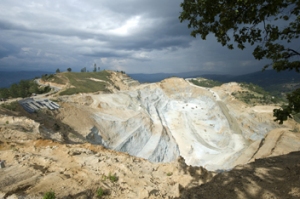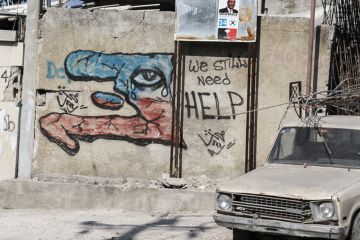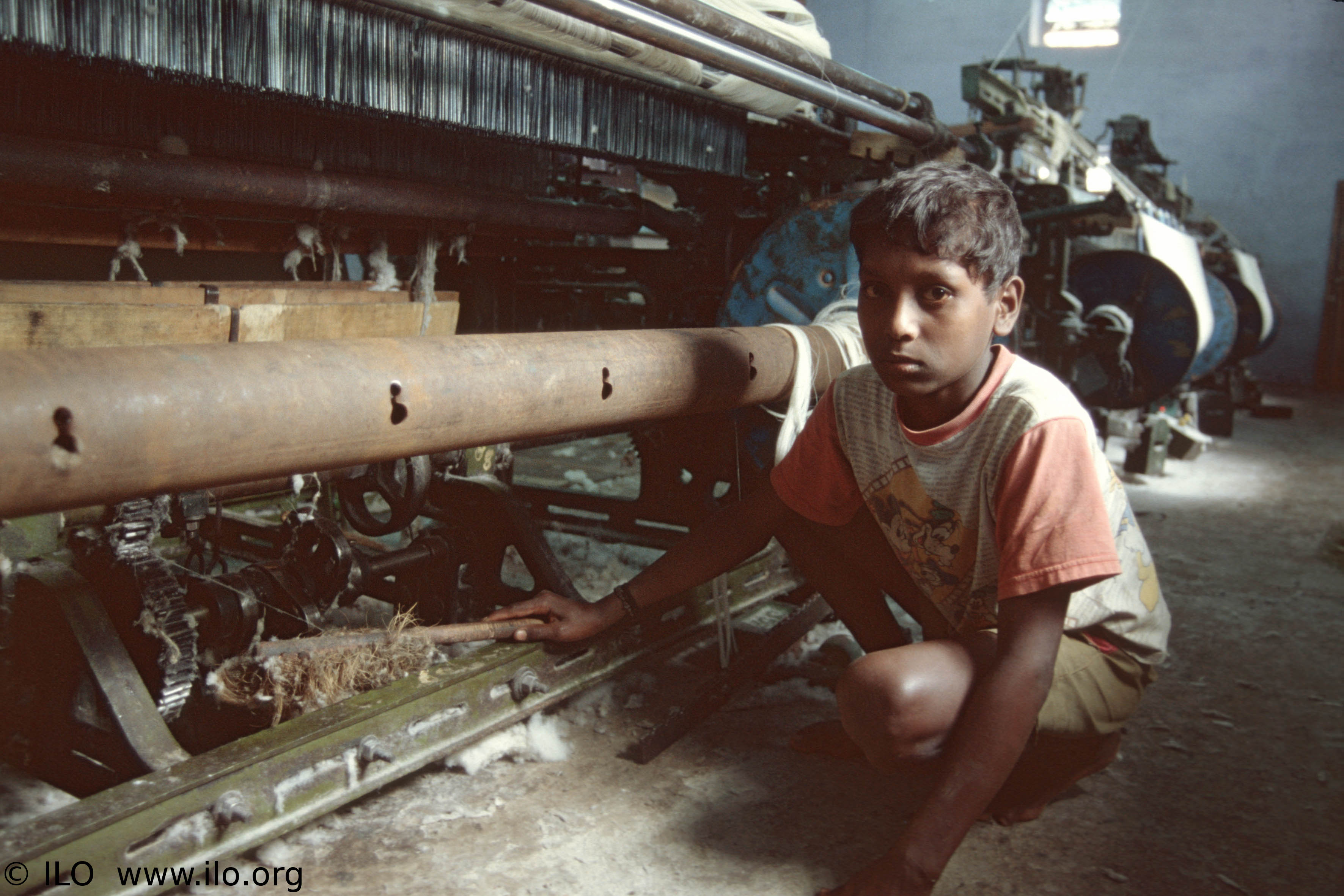There is a distinction between extracting non-renewable natural resources for basic human uses and extracting non-renewable natural resources for mere ambition. Such is the case of gold, a resource that continues to mined not because anyone needs it, but because investors and consumers demand it. This is one of the most striking messages transmitted by the film “Gold Fever.”
On Thursday October 17, McGill’s Indigenous Studies Community (KANATA), together with Amnesty International McGill, McGill Research Group Investigating Canadian Mining in Latin America (MICLA) and McGill Journalists for Human Rights (JHR), presented the film “Gold Fever” as part of the Culture Shock Week from the Quebec Public Interest Research Group (QPIRG) at McGill University. The film screening was followed by two Skype conferences, one with Graham Russell, director of the NGO Rights Action and the another with Aniceto Lopez, a Guatemalan community leader. Winner of the Rigoberta Menchú Grand Prix at the 2013 Montreal First Peoples Festival, the film gives insight into the world of mining and its implications for human rights.
The film tells the story of mining in Guatemala. Since 1998, when gold mines were discovered in the country, the indigenous populations have found themselves involved in the global market, its demands, and its repercussions. The film centers specifically around Mina Marlin, a gold mine in San Miguel de Ixtahuacan, in San Marcos, Guatemala. Since the Canadian company Goldcorp Inc. entered the scene, they have met with satisfactory production quotas and high revenues. In 2011, Goldcorp’s revenue was $13 billion. Even today, Goldcorp continues to benefit at the expense of San Miguel’s local people.
The numbers speak for themselves: in Mina Marlin, for every 100 quetzals of profit, 99 go to Goldcorp, a half-quetzal stays in San Miguel de Ixtahuacan and the remaining half-quetzal stay in Guatemala. In addition, out of the approximately 400,000 inhabitants of San Miguel, only about 700 work on a job related to the mine.
However, there are other inequities at play apart from the inequalities of job and profit distribution. For San Miguelenses, the land that has been theirs for centuries is being destroyed not just in physical terms, but in spiritual and sentimental terms as well. In the film, a San Miguelense resident explained his community’s profound connection to nature: according to their beliefs, when nature is destroyed, a person’s nagual – their personal guardian spirit – is destroyed as well. For San Miguelenses, the land that has been theirs for centuries is being destroyed not just in physical terms, but in spiritual and sentimental terms as well – and given that five tons of earth needs to be removed to produce one ounce of gold, it is easy to imagine the grand scale of the damage done. Regulations might perhaps limit or repair the physical damage, but there would be no such thing as “spiritual repairing.”
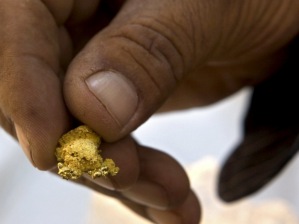
In most cases, if not all, Goldcorp started building their installations without local people’s permission, arbitrarily invading their private property. The film looks at individual cases. The filmmakers interview several San Miguelenses residents who express their despair with regard to the things done in their lands without their consent. The film also expresses their feelings of disappointment and distrust towards their own government, as on the few occasions the Guatemalan authorities showed up in San Miguel, they ruled in favour of Goldcorp each time. People in San Miguel thus feel the violations come not only from the mining corporation, but from their own government for giving companies like Goldcorp, which destroys the environment and refuses to respect the rights of local people, a license to operate.
During his Skype interview following the screening, Aniceto López, a local leader member of Asociación Para el Desarrollo Integral Sanmiguelense (ADISMI) and Frente de Defensa Sanmiguelense (FREDEMI), said that Goldcorp entered San Miguel with promises of modernization and progress, but “nothing has changed. Things remain the same and they just get worse.”
Lopez explained that the people in San Miguel are in a constant fight against the exploitation of their lands, but the job is not easy. “In the last days, 15 cases of sicknesses in kids and young adults were presented, in which people had skin, hair, and other body parts affected by the contaminated waters and the improperly eliminated wastes from the mines,” he said. “This doesn’t appear in the film because people were too afraid to talk. In 2011, three of my colleagues received anonymous death threats, telling them to consider themselves dead if they kept on talking.”
In addition, López said that the media in Guatemala is biased and responds solely to power and wealth, thus San Miguelense’s efforts are not promoted within the nation itself.
Another focus of the film is the issue of intervention from the United States and Canada in Latin America. Guatemala is an example of a country struggling to attain democracy, with a weak rule of law and weak political institutions. The film asserts that one basic obstacle to the attainment of a democratic status in countries such as Guatemala is the international influence. Social and political issues in most of Latin America have historically been subservient to the webs of the global geopolitics and the interests of bigger international players. In 1954, there was a military coup in Guatemala and it in turn sparked a civil war that lasted from 1960 to the 1990s. Like many Latin American countries, Guatemala got its dosage of CIA intervention. Efraín Ríos Montt, a dictator who has received convictions of genocide and human rights abuses and who came to power during this period, had direct ties with the United States and received help from the CIA for his brutal campaigns against guerrilla forces. The film exposes the imperial nature of the United States and the CIA, whose main goal in the conflict was the protection of American corporations. These external influences have contributed to making countries like Guatemala so vulnerable to social and political instabilities, which in turn makes it easier for foreign companies to enter and operate as they wish.
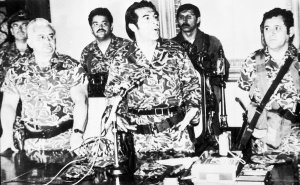
Russell, director of Rights Action, a non-governmental organization that works with community-based groups to help them defend their rights, emphasized during his Skype interview the need of hard law to keep companies accountable. As the film showed, even international organizations such as the World Bank invest in projects of Goldcorp’s type, creating a vicious cycle in which the poor get poorer and suffer disproportionately from changes in the global economy, and the rich simply get richer. Russell adds that if this film was not about gold, it would be about another resource wiht a similar economic or consumerist cachet. The emphasis here is that companies chose to operate in countries and regions of the world where there is a lack of democracy, which is simply one of the roots of “our messed up international economic system,” he said.
Russell further noted that in certain countries, such as Venezuela, Ecuador and Bolivia, there exist attempts to improve mining and provide more benefits to the corporations involved in the business. However, in general there is no such thing as “sustainable mining” or an actual efficient application of Corporate Social Responsibility (CSR) policies. As Russell said, the conception of CSR implies a “profound double standard,” since no Canadian investor would ever live by his own CSR policies at home given a reverse case in which they were the victims. Russell noted that he simply “…[does not] believe in CSR.”
Returning to the persistent issue of the implications brought by a lack of accountability, Russell underscored that Canadian pensions, without the knowledge of the people, are invested in these types of projects. He posed the following questions: how can Canadian citizens be unaware of the type of investments in which their money is being spent? How is it possible that in a nation like Canada companies like Goldcorp continue to operate with complete impunity? Russell said it is important to become aware of the fact that “if we are part of the problem, we need to be part of the solution.”
In the same way, López emphasized his endeavor to transcend boundaries in order to make people in Canada aware of the sufferings of the families in San Miguel. López invited everyone to personally go and see the disasters generated by Goldcorp or simply get involved in the cause in any possible way – monetary aid, activism, academic research. He emphasized that people in San Miguel really do need any kind of help, and that working together with people in Canada would signify a tremendous difference for their cause.
The film exposes the multiple layers and dimensions of the problem, showing how hard it is to identify where the roots for the potential first steps of a solution could be found. As Lopez says, Guatemala needs a “structural change,” and as Russell says, the international system needs a “structural change.” As for what the company has to say in its favor, it can just be said that Goldcorp refused to be interviewed for the film.
The multidimensional issues at the domestic level in Guatemala and at the international level are intertwined and revolve around a resource demanded by the latter, provided by the former, but truly needed by neither. As Magali Rey Rosa, a columnist from the Guatemalan newspaper, Prensa Libre, said, “We are not going to eat gold, we are not going to drink gold, or use gold for any of our basic needs.”
Written by Maria Jose Torres-Santeli. The Gold Fever Film Screening and Panel Discussion is a co-presentation by Journalists for Human Rights @ McGill, Amnesty McGill, McGill’s Research Initiative on Mining in Latin America and Kanata

